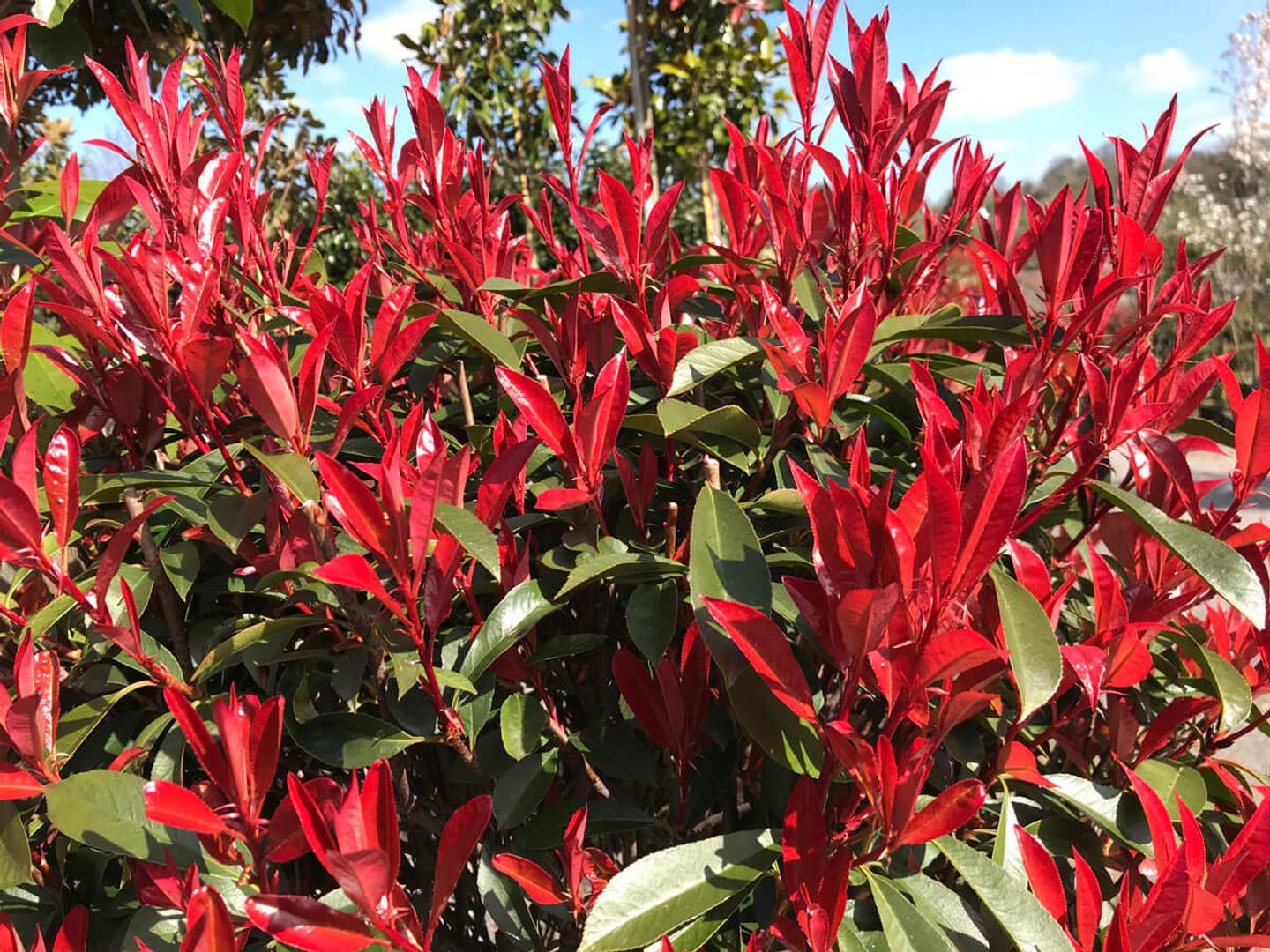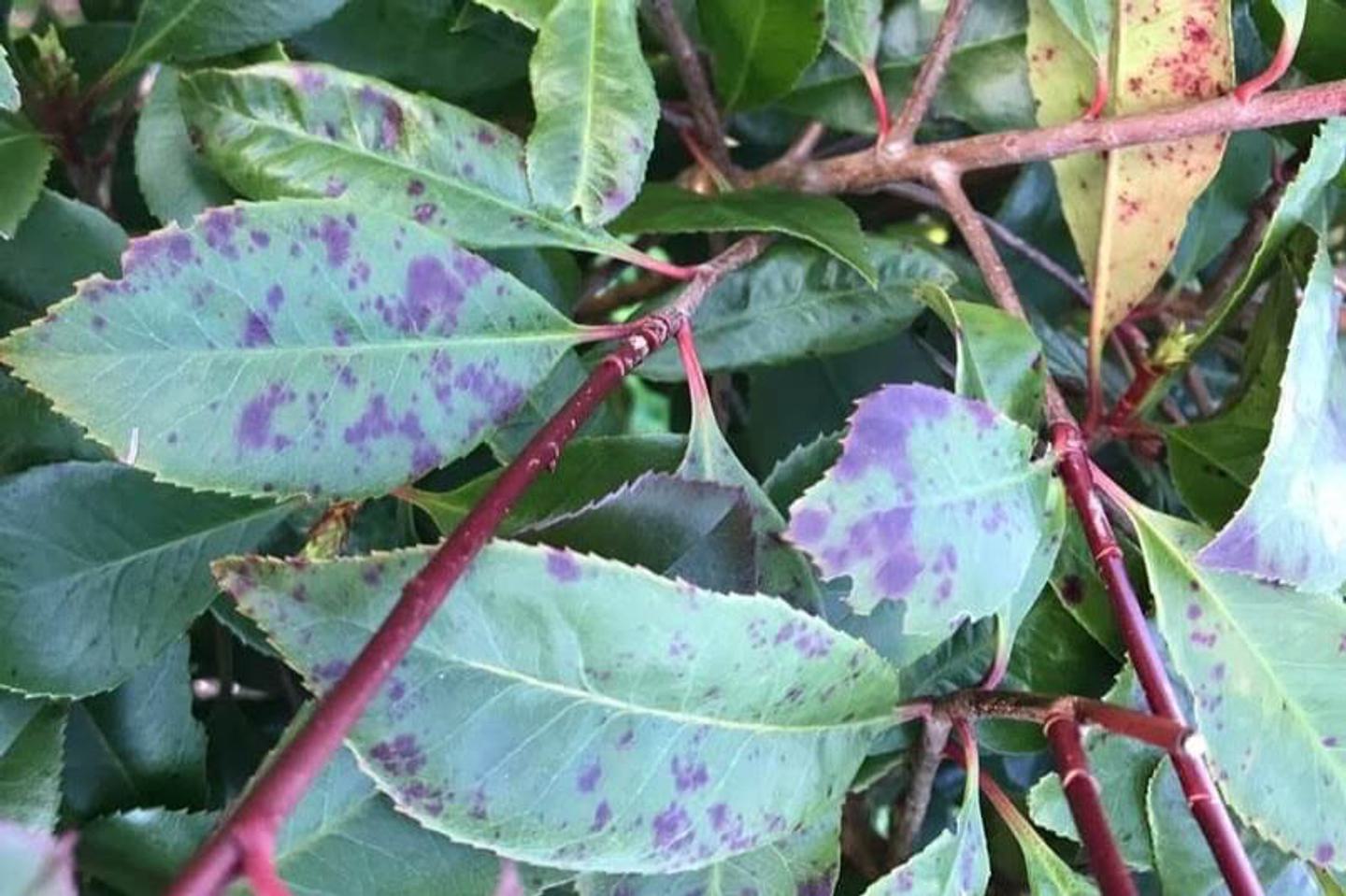Guides
Growing Photinia
The versatile and attractive Photinia 'Red Robin' has become somewhat of a staple plant in UK gardens in the last two decades. It's no surprise why! It can be grown as a hedge, shrub or small tree, looks wonderful pleached or as a stilted hedge and makes for great screening. In addition, Photinia is easy to care for and offers more interesting foliage than many of the more 'background' screening plants out there.
The species name Photinia stems from the Greek for luminous, photeinos, referring to the shrub's bright shining foliage. Photinia x fraseri, from which Red Robin has been selected for its bright red new growth, was created at the Fraser Nursery, Alabama, in the 1950s by crossing Photinia glabra and P. serrulata. The cultivar name needs no explanation! Although Red Robin was bred in New Zealand, the parent plants originate in mixed forests in Asia.
Growing Red Robin (and its close relatives such as 'Robusta') is generally straightforward, but since it is such a popular plant, here is some in-depth information to consider.

Soil & aspect
- Any fertile, moist but well-drained soil
- Full sun or part shade
- Prefers a little shelter from wind to protect the large leaves, but is perfectly hardy,
- suffering just a little late frost damage in spring cold snaps (this is soon covered by fresh growth)
- Remarkably resistant to drought
- Even copes with heavy clay soil, though adding compost or manure will help
Growth rate & pruning
Red Robin grows fast. It can put on as much as 30cm in a year, therefore it's great if you want some quick coverage, but if you want thick and bushy, trim it back to encourage branching.
Pruning is easy as Red Robin will grow back from anywhere on the stem. Trim two or three times a year in spring and summer (but not after August). Use a hedge cutter or shears and take off about 15cm at a time.
Left to grow, Photinia will reach about 5m in height by the same spread.
Evergreen, but expect leaves to age
Photinia is certainly classed as an evergreen, offering year-round foliage cover, but even evergreens lose leaves that have got old and past their best, usually dropping them in spring before new growth bursts through. This means that in autumn and winter, especially after the worst of the weather, Photinia can look a little beaten-about. This is nature! Once the shiny new foliage has come through, with that lustrous red glow, you'll forgive your Red Robin for its winter sins.

Photinia leaf spot and heavy leaf loss
The Royal Horticultural Society advises that Photinia can suffer from leaf spot – brown/purple discolouration on the leaves – but this is not due to a pest or disease. It's actually caused by stress and is most often seen on larger, recently planted specimens, which are at risk of transplant shock (a teething issue that occurs as the tree adapts to its new environment). The RHS notes that Photinia can also suffer after cold, wet winters.
Here's the RHS advice:
"To avoid this type of damage, plant in a sheltered spot preferably against a wall or fence. Cold winds and/or frosty conditions can also damage foliage, again causing leaf spotting if adverse conditions are prolonged. Feeding with a general-purpose fertiliser such as Vitax Q4 or Growmore in spring or early summer should encourage healthy re-growth. If the ground is heavy, incorporate organic matter to aid drainage.
"The damaged foliage usually falls away naturally in spring/early summer, sometimes with heavy leaf losses. These losses are replaced by new growth in summer, but plants may become thinner in the centre and the only way to make them denser is to prune. Thankfully, photinias respond well to pruning, so cutting back some of the stems in early May/June will encourage younger, more leafy shoots."